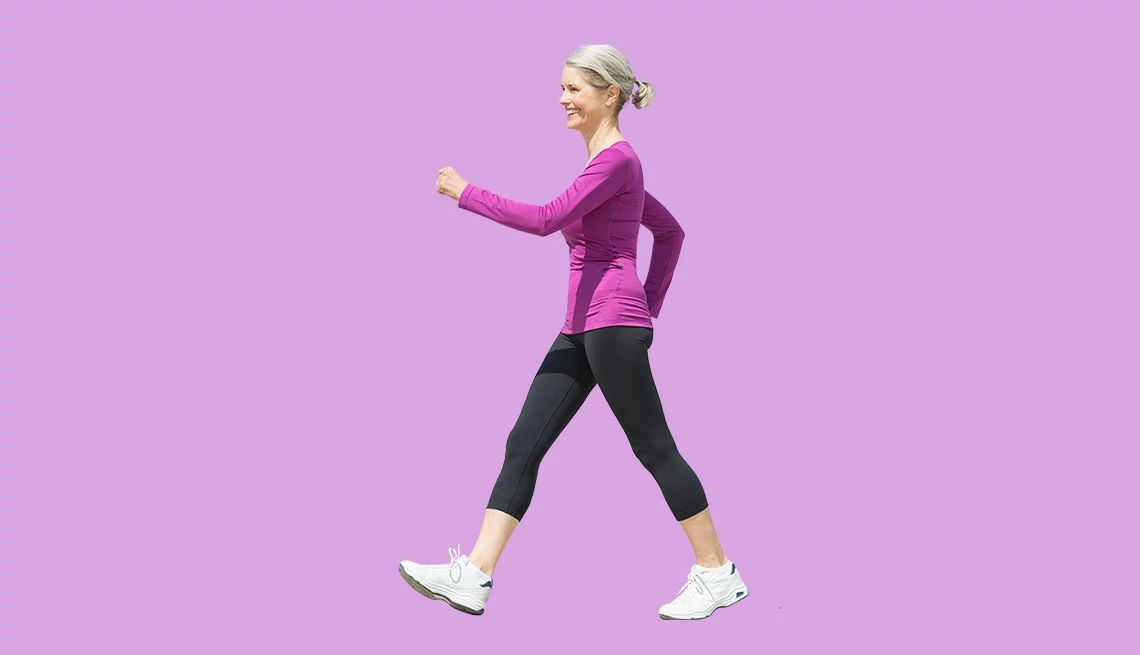AARP Hearing Center


You already know that walking burns calories, boosts stamina, improves heart health, reduces stress and lowers inflammation — and that the more you can do it, the better.
Sometimes, though, walking is a pain in the butt … and the legs, the back and the feet. But with a few tweaks to your posture and stride, you can walk stronger, longer and without pain.
“Maintaining the best posture possible allows your body to distribute its weight more evenly and move more efficiently. That keeps muscles pain-free by preventing them from becoming overstressed and overworked,” says Mike Mancias, longtime personal athletic trainer to LeBron James and author of Game Plan. “Better still, watching your form can also allow your lungs to expand further and take in more energy-rich oxygen, so you’re less likely to fatigue as quickly.”
Here’s his head-to-toe (literally!) checklist on how to step up your game the next time you take a stroll.
1. Walk with your head in the right position.
Tilting your head down causes your shoulders to roll forward, preventing you from breathing as deeply as possible. “Remember, oxygen equals energy!” Mancias says. Instead, look straight ahead (about 10 feet or so in front of you) with your chin lifted. Try to keep your ears in line with your shoulders, which will prevent you from leaning too far backward or forward.
2. Don't slouch your shoulders.
Gently roll your shoulders upward, then back, then down—and keep them there. You want your shoulder blades to nearly touch each other at the middle of your back. This prevents slouching and reduces tension on the upper back and neck.




































































You Might Also Like
Full-Body Pilates with Niki Pislis
Develop and sculpt your body with 10-minute session25 Great Ways to Get a Flatter Stomach
Tips on how to lose belly fat and get a tighter tummy25 Great Ways to Build Healthy Habits
These tips can help create changes that positively impact your well-being for years to comeRecommended for You